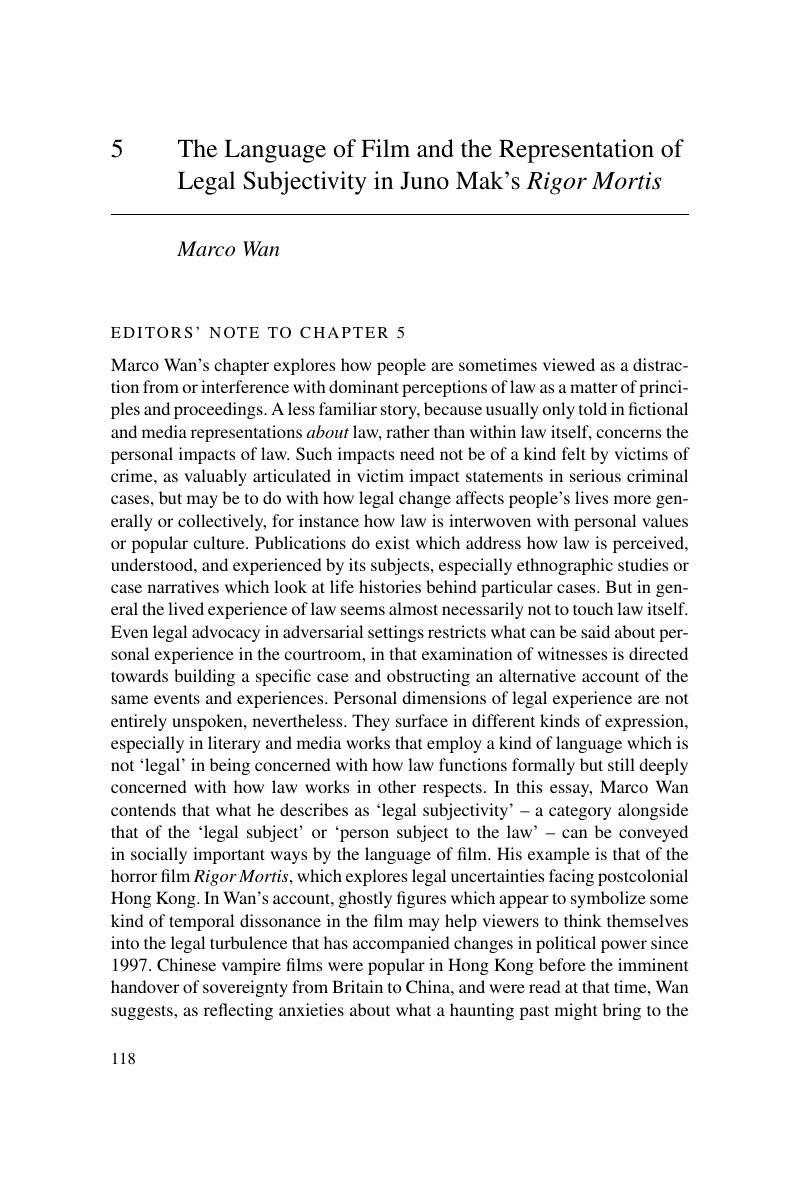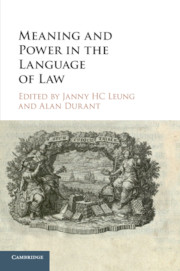Book contents
- Meaning and Power in the Language of Law
- Meaning and Power in the Language of Law
- Copyright page
- Contents
- Contributors
- Acknowledgements
- Editors' Introduction
- Part I Sui generis or Socially Problematic: The Character of Legal Language
- Part II Imperfect Fit between Legal Categories and Social Discourse
- 4 Effects of Translation on the Invisible Power Wielded by Language in the Legal Sphere: The Case of Nepal
- 5 The Language of Film and the Representation of Legal Subjectivity in Juno Mak's Rigor Mortis
- Part III Written in Silence: Hidden Social Meanings in Legal Discourse
- Part IV Conflict between Linguistic and Legal Ideologies
- Part V Demands of Law and Limits of Language
- Afterword
- Index
- References
5 - The Language of Film and the Representation of Legal Subjectivity in Juno Mak's Rigor Mortis
from Part II - Imperfect Fit between Legal Categories and Social Discourse
Published online by Cambridge University Press: 28 December 2017
- Meaning and Power in the Language of Law
- Meaning and Power in the Language of Law
- Copyright page
- Contents
- Contributors
- Acknowledgements
- Editors' Introduction
- Part I Sui generis or Socially Problematic: The Character of Legal Language
- Part II Imperfect Fit between Legal Categories and Social Discourse
- 4 Effects of Translation on the Invisible Power Wielded by Language in the Legal Sphere: The Case of Nepal
- 5 The Language of Film and the Representation of Legal Subjectivity in Juno Mak's Rigor Mortis
- Part III Written in Silence: Hidden Social Meanings in Legal Discourse
- Part IV Conflict between Linguistic and Legal Ideologies
- Part V Demands of Law and Limits of Language
- Afterword
- Index
- References
Summary

- Type
- Chapter
- Information
- Meaning and Power in the Language of Law , pp. 118 - 134Publisher: Cambridge University PressPrint publication year: 2018

